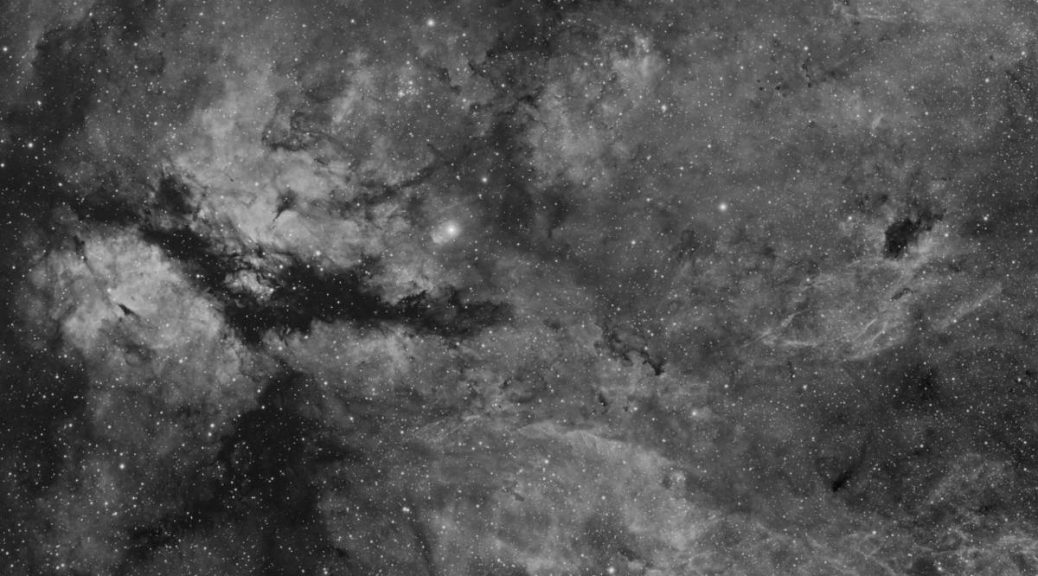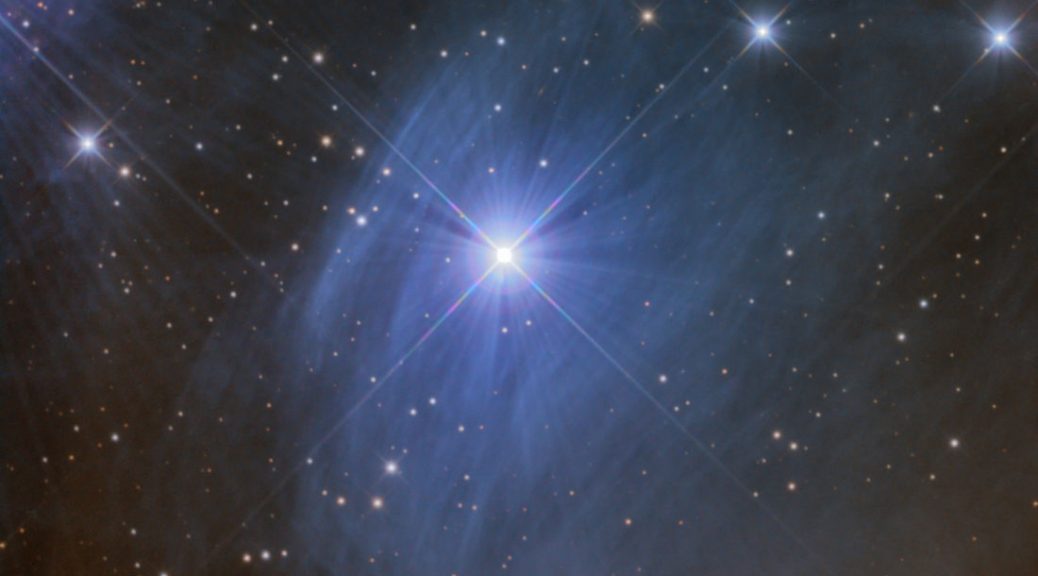Sadr (Gamma Cygni) sits at the centre of the large asterism known commonly as the Northern Cross that makes up the constellation of Cygnus. The region surrounding this F8 supergiant is rich in dust and hydrogen within the plane of our Milky Way as this view, taken in the light of hydrogen alpha (at 656.3nm) shows.
 Notably, just to the east (left) of Sadr, is the Butterfly Nebula, IC1318. This actually sits much further away from us than Sadr at ~5000 light years (Sadr is about 750 ly distant). The nebula appears split into two by a dark dust lane running E-W, catalogued as LDN 889.
Notably, just to the east (left) of Sadr, is the Butterfly Nebula, IC1318. This actually sits much further away from us than Sadr at ~5000 light years (Sadr is about 750 ly distant). The nebula appears split into two by a dark dust lane running E-W, catalogued as LDN 889.
In the lower right of the image is the Crescent Nebula, NGC6888, powered by the Wolf-Rayet star HD 192163, while to just to its east, and only faintly visible is the small planetary nebula, PN G75.5+1.7, also known as the Soap Bubble – though really a bigger scale and [OIII] filter data would make this much more obvious!
Image taken on 17th Sept 2018 from West Oxfordshire.
QHY163M (-15C, gain/offset=200/85), Canon 200mm 2.8L II (@f3.85), Baader 7nm HA filter, Losmandy GM8 with Gemini 1.
3h40m total exposure (5min subs) with HDR Composition for bright stars (25x30sec).
Processing in Pixinsight.
Image is centred at: (nova.astrometry.net)
RA: 20h20m25s
Dec: 40°20’31”












